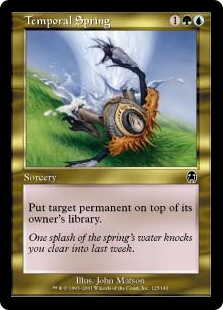
I am forever harping on about the importance of tempo in magic, specifically in the cube. In cube it is the power, frequency, and general importance of planeswalkers that elevates the relevance of tempo over other formats although it is still important everywhere. Having "the tempo" means you can efficiently deal with planeswalkers while your own will do more for you. Ultimately in magic you win as a result of having more value (card advantage) or more tempo than your opponent. Card advantage has been conceding ground to tempo in terms of importance for a long time now, probably since the advent of planewalkers. Certainly value or card advantage is still important but less so than tempo. The difference between tempo and value is that value is really easy to measure while tempo really isn't. I watched a Channel Fireball video recently where LSV and Matt Nass discuss the topic and while they did a great job of covering it and said nothing I disagreed with I feel like there is more to be said and in a way that can be more useful in games. Essentially I wanted to make a system for looking at tempo that makes it easier to numerically look at and measure tempo exchanges in magic.
To my mind doing nothing, or indeed doing something without an effect on tempo in a game, is tempo negative. Unspent mana costs you tempo. This means we have to set doing something as tempo neutral. As such I would describe the addition of one power to the board for one mana to be tempo neutral. This is the base line in its simplest form. Any thing better than this one power for one mana would then be tempo positive and any thing less tempo negative. It relates to a permanent addition as well, be it a 2/2 for two mana or a +1/+1 counter for one mana. A Giant Growth is not a tempo gain just for playing it, you need to get some actual work done with it in combat to advance your tempo. There are situations that getting damage through to face affects tempo and we will return to this but for the most part we can ignore changes in life total in regards to tempo. Certainly so in the early game where life is not under any immediate danger of running out.
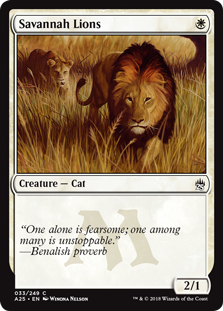
So, if I play a land and do nothing I am down 1 in tempo. If I lay a land and make a 1/1 then I am even and if I play a 2/1 with that one mana then I am +1 on tempo. So far all nice and simple. If I remain tempo neutral and you do absolutely nothing then I will win in 5 turns assuming I curve to four mana which is a reasonably good measure of how much tempo differential over time is required to win a game. A 1/1 with four attacks, a 2/2 with three, a 3/3 with two and a single hit from a 4/4 adds up to exactly 20. Rather than thinking in terms of damage output you can look at this in terms of tempo loss from the opponent from doing nothing. The tempo difference is one on the first turn, two on the second and so forth. The total tempo difference is 10 but the tempo difference on each turn multiplied by the turns that tempo difference was not addressed combined is 20. That is typically a quality of having tempo, the momentum of it carries over turns. You only need to be a little ahead to maintain the advantage and win eventually. Sure, you can use your tempo to pull further ahead in some regards, sometimes this is correct, sometimes not possible, and sometimes doing so is just over extending. Sometimes you just try and hold onto a couple of useful tempo over your opponent and ride that to the win over many turns.
Loosely I want to define a tempo advantage of 1 as the ability to deal one damage to face or planeswalkers per turn. You could equally think of it as the lowering of your kill clock. A tempo advantage of 1 will win in 20 turns while an advantage of 5 does so in 4 turns. It works both ways as well, so a good tempo play can be extending your opponent's clock rather than reducing your own.
With these examples of curving out with threats we can start to see that doing nothing is far more detrimental than the quality of plays. I can open with a brutal high tempo start of Isamru into Fleecemane Lion into Loxodon Smiter which is +3 tempo over three turns but the clock is still much the same as the tempo neutral opener. They both kill on turn five against an opponent doing nothing. Sure, you don't need a four drop to get to 20 damage on turn five and you will have done 16 on turn four rather than a mere 10. Ultimately however you curving perfectly compared to you curving adequately has far less impact overall than the difference between your opponent doing nothing on the tempo front compared to doing almost anything at all.
Broadly speaking there are two things an opponent can do to fight for tempo. They can make their own plays and attempt to stay even or pull ahead on the board. Equally they can deal with the tempo plays you make reducing your progress to nothing. Tempo is a relative measure and it only matters how much you have compared to your opponent. Both having nothing is effectively the same as both having equally well developed boards. Typically control decks will try and reduce opponents to low tempo states to match them while aggro decks will focus on advancing their own tempo more rapidly than opponents can advance their own or curtail yours.
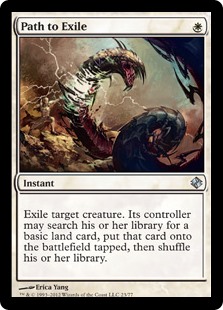
Tempo is most often quoted in terms of mana spent which is very relevant. It is also nice as it is measurable like card advantage. Sadly, unlike card advantage it is not the whole picture. It needs an exchange to take place and even then needs to be immediate, complete and contained. A Path to Exile has other effects and as such is rarely a contained exchange. Using removal on a card with an EtB effect is also never really complete as you have only done an exchange with part of the card. On those rare occasions a trade is immediate, complete and contained, the mana differential is the tempo and that is a nice clean way to understand it.
Let us look at the simple case of a Lightning Bolt on a Watchwolf. This can be a neat exchange and it is a trade that affords a one mana advantage to the player with the Bolt. This affords a +1 tempo boost in and of itself. This might be lost if the remaining unspent mana is not put to use. In reality however it is a +1 tempo play in isolation and sometimes a +2 tempo play. This is because tempo is relative and only in relation to your opponent. They gained a +1 tempo swing on you by playing their high tempo beater. At worst you have removed their edge back to neutral, at best you have also furthered you own position with the saved mana.
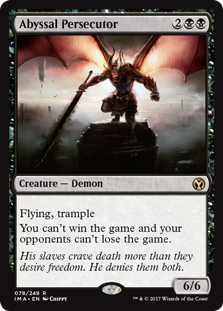
By extending this exchange up the curve it becomes more evident as to why larger threats are riskier. You really struggle to gain more than +2 tempo on your threats even at the higher costs. A four mana 6/6 is not something you can get as a vanilla dork as it is sufficiently "above the curve". It is however increasingly easy to get a huge tempo advantage by dealing with such threats efficiently. If I just Fatal Push your Abyssal Persecutor I have gained +3 tempo from the mana difference in the exchange and +5 relative tempo in bringing down such a significant board presence. Very much a case of the bigger they come, the harder the fall. These kinds of massive tempo swing are only possible when high CMC cards are involved. That or lots of small CMC cards getting dealt with at once. Sensible play involves considering what answers your opponents might have and positioning yourself such that you minimize the risks of eating big tempo swing plays. Spectral Procession is decent against a Ravenous Chupacabra and devastatingly bad against a Goblin Chainwhirler while a Thalia, Heretic Cathar is quite the reverse.
As the game goes on the odd power here or unspent mana there matters a lot less and it becomes about relevant power. Life totals also matter more and everything gets more context dependent (which it already entirely is in practice). We need to have a bunch of little discussions about some specifics so that we can do some estimating and generalising about things in the late game.
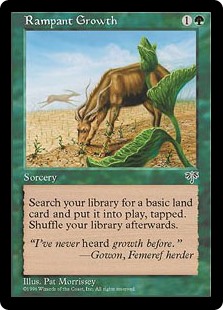
I was wondering how to address ramp in that it is generally a tempo negative play, at best neutral when on a dork. It is however used entirely as a means to do more stuff more quickly which usually translates as "gain more tempo". A turn two Rampant Growth is a -2 tempo play as it is two mana spent neither adding or removing power on the board. This is an accurate description of this in game on the turn but doesn't help show how it can help later on. This is done by counting mana relative to the turn. Normally playing a four mana 5/5 would represent a tempo of +1 and a four mana 4/4 would be tempo neutral. If however you do it off the back of a ramp spell it is in essence a 3 mana spell and as such would constitute a tempo gain of +2 or +1 respectively instead. A ramp spell can apply this cost reduction once per round of turns, once per turn in the case of Wall of Roots! Cost reduction effects like the Medallion cycle can do so once per cast. To account for the relevance of the ramp you still need to penalise unspent mana. This in turn starts to harm the model of tempo in the late game as resources run dry and mana goes unspent. The model overly punishes players who invest in mana. In practice it is not relevant really as the game is a value game and not a tempo one when it has reached that stage. That or someone is just desperately trying to draw their out/win card.
Considering the tempo is a thing mainly for those who have options on how to spend mana! So, you can compensate for the poor model relating to ramp in the late game by gradually lowering the penalty for unspent mana from -1 towards 0 starting somewhere from turn six and probably over as many turns. A bit of a fudge but a reasonable one. Or you can just not bother as the game is probably not a tempo one at that point.
Control decks have a weird relationship with tempo and unspent mana too. A control deck usually feels like it is winning if it can keep everyone even on tempo without anything really going on. Ideally it would just make lands every turn and do nothing else while the opponent also does nothing. Usually it has to either concede some early tempo in the hope that it can reclaim it all later, or at the very least expend a load of resources on keeping the opponent's tempo down. With things just being even the control player feels happy due to the nature of their deck and win conditions. Each extra turn, card, and mana makes the win more likely for the control deck. In this situation it would appear that the control player is probably losing due to the penalties for unspent mana. Especially if they have developed more mana than the opponent. There needs to be some cancellation effect from opponents not spending any or much mana as a result of you representing overly efficient answers.
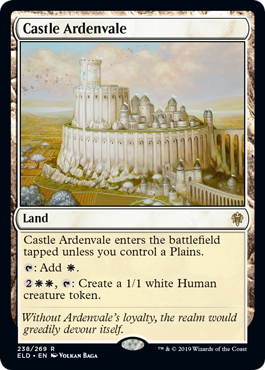
It is good when you can trade off turns of doing nothing as a control player however it is often even better than that. If you can represent an answer so efficient that the best line for your opponent is to do nothing but you also have another use for mana at instant speed such as a card draw spell or a land with an activated ability you can start to pull incrementally ahead. A 1/1 from a Castle Ardenvale is a strongly negative tempo play coming in at a dodgy -4 on my rating scale. If however it comes with a turn of your opponent wasting all their mana then it suddenly becomes +1 tempo play as you can discount the mana cost to you. Unspent mana is only something you can penalise on tempo when your opponent is spending it. If I spend nothing on my turn in an attempt to represent a Cryptic Command and you spend nothing to try and dodge it then we are all even. If I use that mana to play a Chemister's Insight at EoT then I am ahead on value at no cost to tempo. If I use it to deploy a Restoration Angel then I am very ahead on tempo instead. If you play a low relevance two drop I don't want to waste my permission on and I do nothing at all with my mana I only suffer the unspent mana on two accounts as that is all my opponent invested. If however they slam something like a Carnage Tyrant which plays around my permission in a different way then I am savagely behind from my choice to do nothing. This is all really a tool for dealing with reactive decks that like to play at instant speed and has little baring in other matchups. Unspent mana in ramp decks and in control decks are rather different animals and need to be appreciated as such when looking at the tempo implications in the context of those archetypes. The main take away is that it is all about having, or at least representing, things to do with that mana. Unspent mana is not the problem when you have nothing to spend it on, lack of action is. It is always nice however when you can bluff having something when you have nothing and succeed in mitigating the tempo cost of unspent mana.
Basically this taking into account your opponents spending of mana and developing of board is essential what with tempo being such a relative measure. You cannot really look at the tempo of a turn in isolation, it has to take into account both your opponents last and/or their next turns. Obviously you only want to match up the numbers like unspent mana for one turn each. Typically it seems as if the proactive (or just starting) player is looking to the next turn while the reactive, or just behind player is rather more looking in the rear view mirror.
Earlier I mentioned relevant power which is increasingly important as the board states develop. It is also where bigger dorks with higher CMC and stats regain some value after having gained some bad press for risking big tempo swings against them. Pretty simply relevant power is power that can reasonably be expected to do damage in combat. This might mean it has evasion of a suitable form or it might just mean that it is sufficiently powerful in combat to take out would be blockers. If my power either trades off efficiently or does damage to players and walkers then it is relevant power.
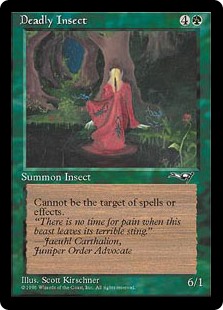
This is all simple enough but it gets more complicated when we consider things sitting in play. If I make a 2/1 on turn one I am up +1 on tempo. If you follow that with a 1/1 then despite your play being neutral in a vacuum it can negate the tempo of my play and effectively count as a +1 play as well, or a -1 play on me if you prefer. Now, if those things trade off then all is well and even again but if they both just sit in play staring at each other the tempo can swing a bit. If I kill your 1/1 that effectively unlocks my 2/1 to safely apply pressure again. Whatever effect I removed the 1/1 with will therefore gain that extra +1 tempo rating because that 1/1 was "pinning" down the 2/1. This means that in order to properly assess the tempo implications of a play on complex boards you need to be able to work out the way things line up as attackers and blockers. Which dorks are pinning down which others and how they pair (or otherwise) off. This is where toughness starts to factor in much more. A 1/1 might pin a 2/1 but it does very little to a 2/2. Toughness starts to count towards relevant power or negating relevant power and thus tempo but only when there is combat and lining up of dorks to be considered. Obviously low toughness makes your dork more susceptible to removal as well. This means an X/1 does afford the same tempo as an X/X on an empty board but it is still a higher risk play (on values greater than X=1 for the maths pedants like me). An X/1 not only dies to more removal effects but it is also more easily pinned by smaller dorks too so risky in several ways.
As a quick aside a 0/1 plant token obviously isn't negligible despite my model seeming to say it is. It is of course a context based thing and can absolutely be irrelevant. Usually it will be able to make a chump block which can represent some life gain. Perhaps it buys you another turn with a planeswalker in play, perhaps that snowballs into more turns with the active walker. Perhaps they have a menace dork that your 0/1 helps to pin. With buff cards a body in play can represent haste and as such be a bit more threatening. On an empty board you might want to use a planeswalker to draw a card but if you know your opponent has a Wolfir Silverheart in their deck then you might well need to use a removal mode on the walker to kill a 0/1 and take away that risk.
Things can become pretty savage when one player is relying on a single card to deter multiple attackers as removing it will unpin multiple dorks and thus gain the additional tempo perks from all of them at once resulting in a very high tempo play. Equally though a big dork deployed early enough can pin down multiple attackers and recoup a huge amount of tempo very efficiently. There is also just the risk that they get sufficiently developed that they can just chump attack through a single trump creature. Typically this is "going wide" but in this discussion it it most closely linked with life totals and kill clocks.
A kill clock is how long it takes in turns for you to win if nothing else changes in the game. Life totals become relevant to tempo when they alter a quick kill clock. This quick stipulation is to give a pass to minor changes in the early game. Obviously if no one is representing any sort of relevant power then life total changes don't effect tempo however if you lead with a 2/1 on turn one you now have a kill clock of 10 turns. If I lay a shock land untapped I reduce that to 9 turns which would technically be a relevant change. In practice it is fairly minor as a life totals are still nominally high and dropping slowly. A lot can happen in 9 turns! More pressing things are probably at hand. Probably best to set up the next few turns with a Preordain and take that two damage. Broadly speaking the higher the life totals, and the longer the clocks the less relevance they should have on the matter. The difference between a kill in two or three turns is huge while the change between nine and ten is minor.
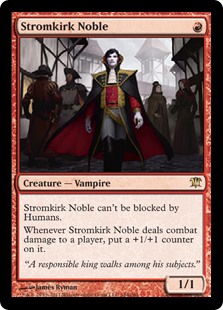
Tempo over time effects are easy in some cases such as a clean suspend card. You invest mana early and suffer a tempo loss which carries for some number of turns util it pops and affords a big tempo (and/or value) swing in the other direction. A card which churns out a token dork every turn is much the same except the tempo return is incremental rather than all in one go as the suspend card is. Cards like Stromkirk Noble or Champion of the Parish however are far trickier and more contextual to model. They depend on so many factors from board state to deck composition. There is no simple and clean way to do it so you just need to estimate. This is part of their strength, the unknown quantity of their threat level and tempo might make them harder to play with but it makes them even harder to play against.
Planeswalkers themselves are some of the hardest tempo cards to consider as they make everything so multidimensional. They usually offer some tempo over time aspect but they also typically have effects not relating to tempo and these are woven together as the controller sees fit. Unlike a predictable Bitterblossom doing the same thing every turn planeswalkers may or may not invoke a tempo swing on any given turn. To further complicate everything they effectively have a life total which will mess up any sort of clean kill clock. Mostly you kill the walkers before going face because walkers are powerful enough that left alone for a turn or two can spell disaster. Walkers need to be very bad for an opponent with a kill clock of three or more to not take the time to handle the walker first. Obviously you almost always go face with a kill clock of one although Magic always has a corner case. Only really at a kill clock of two is it frequently an interesting choice as to going face or taking down the walker. Often "spare" damage is used on walkers so as to calm there potential threat level down. If your opponent is on 6 and you have five relevant power and they also have a walker on 5 loyalty you have some options. You can go all face and put them as low as possible which might be right if you have direct damage and they lack ways to handle that line. You can go all at the walker and kill it but in the process you give your opponent an extra turn alive. You also have sensible splits in the middle of both of those options. You can hit face for 1 and the walker for 4 down to 1 loyalty as well. This means the walker is fragile and limited but you still win next turn assuming no other changes. This line is safe in terms of walker control while balanced in terms of kill clock although it maximises risk on losing that kill clock. You can elect to attack face for more and the walker for less so as to balance risk on clock vs risk of walker getting out of hand. This choice will depend a lot on the walkers loyalty costs and effects as well as the anticipated answers for your opponent and routes to victory from yourself.
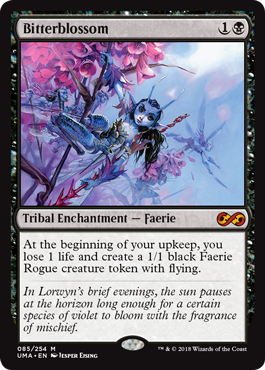
When evaluating the value of a card with an over time effect you want to be able to estimate the duration of the card which often means working out the expected length of the game. Let us look at a Bitterblossom. It is -2 tempo right away as nothing happens. Then, like a ramp card it adds +1 tempo to every subsequent turn. It takes two turns to get back to neutral tempo and starts to look reasonable at more than three triggers. Due to the delayed returns you will likely spend some time behind and thus have to do a little more work to recover your investment hence me thinking more than three triggers is when you go from fine to good rather than at three. A game that is over in two turns is one in which Bitterblossom is neither good tempo or good value. A game that is at least seven however will however allow the card to be pretty dominant. This all comes with the caveat that the life loss is negligible. In practice this is not the case and your life total and the length of the expected game is often rather prohibitive to playing Bitterblossom.
The tempo of a planeswalker needs to be looked at in multiple lights. How quickly you can kill it verses how quickly you can end the game is a significant one. How much loyalty it has, how much it can gain and what it can then do over time with that total pool of loyalty are also significant. Much as I could dive deep into this aspect of tempo this article is already far from short. It also contains the concepts needed to be able to breakdown a planeswalker in terms of tempo and evaluate it in those terms.
Let us consider an example where we can focus on tempo in relation to life totals more. If I have seven 1/1 dorks I have a kill clock of 3 turns against 20 life and nothing else. If you have a single 1/2 or bigger blocker that kill clock is reduced to five turns. That single creature represents two whole extra turns alive, not to mention killing multiple 1/1 dorks if they do elect for an aggressive line. You could alternatively say that the defensive dork was worth 15 or so life as that is the point at which life gain affords the same extension as the blocker. All told this 1/2 is doing quite a lot of work in the situation. This little example highlights how life is not at all worth a linear amount. Life is worth the turns it buys, the reduction in kill clock if you will. Four life is worth nothing when you are at ten and facing 15 coming at you. It is worth rather significantly more when you are at one and facing off a 1 power beater! Life is worth the kill clock extension which is a product of life total (minus direct damage potential) and relevant power. This equation also assumes you have no useful things to spend your life total on such as sac lands and activations of Yawgmoth's Bargain! Such things muddy the waters on evaluating life gain from a little in the case of most lands to a lot in the case of most card draw or mana production.
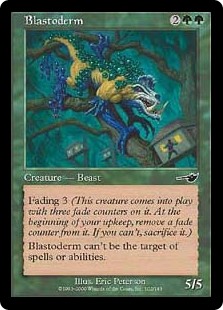
While formulating values for life is all well and good it doesn't help us pin down values for tempo in terms of kill clock changes. A better way to consider a kill clock is to think of it as a modifier for tempo. A 5/5 is made to have twice the kill clock against a 10 life opponent as it is against a 20 life one. It carries the same tempo regardless of the life totals but due to the life total differences less tempo is needed to close the game. You can only directly equate life totals to tempo when there are no other complications. A 5/5 against a 10 life opponent is the same as a 10/10 against a 20 life opponent if there is nothing else involved on the board, removal wise, or things that will affect life totals. This is the only time you can really say that the doubling of life directly halves the tempo on a dork. The more you complicate options, possibilities, and board states the more tempo disregards life totals. Everything else does already. Just because you are on 40 life not 20 makes no difference to the 2 loyalty planeswalker or 3/2 dork in the face of a 2/1 or a Shock. Clearly in the face of a card that made a chump blocker every turn the difference between 5/5 while on 10 and 10/10 while on 20 in that case is rather minor. You would tend towards the higher life and bigger threat if you can easily remove things regardless of size or if you were afraid of burn or other forms of reach. If your ability to handle a threat is more affected by toughness and your are less afraid of your opponent's reach then you will lean more to the 5/5 threat facing your 10 life total. Make of that little tangent what you will! Not an easily engineered set of positions to be able to choose between but at least understanding the difference and spotting similar situations should be helpful in play.
The main thing I realised when trying to equate kill clocks to tempo is that it is rather meaningless. It is a little like when things become a value game and not a tempo one. It ceases to be overly relevant or useful to the decision making. It is a skill to know for sure, when the game is all about tempo, all about value, or a blend of both and with what sort of lean. Like knowing when to start going face with burn in a RDW match. Once kill clocks are a few turns away it is everything on the table. The game is win or lose and so derived numerical values are pretty pointless. Tempo is the tool you use to leverage you position such that you can represent an imminent kill clock on your opponent. You use the early game to make tempo plays and sustain them for a few turns sensibly such that you reach the end game under your under your terms. At that point it entirely becomes about the specifics. You want to make the plays that win the game and not the ones that theoretically maximize tempo or value. It is purely contextual in those final few turns and so theory discussions like this are somewhat less helpful in directing plays. Use the theory to get to those positions more effectively and to just understand the game better. While of rather less use in games a theoretical understanding of tempo is of huge value as an exercise of understanding. When you can appreciate the nuance of tempo and how it changes under the various conditions you can apply to the game then you are perfectly positioned to make good choices in games. You will be able to spot the right lines. You will not work out the tempo as I have described it, you will look at numbers like power and life, toughness and loyalty for sure but you won't need to try and convert these into tempo numbers. Your good understanding of the underlying mechanics of the game will help direct you to the best play for that situation. You will have a feel for how much risk you need to take and how much the game is leaning towards the value fight or the tempo fight and this will direct your action. Tempo in the abstract sense is something you fight for early when a kill clock is far to far down the line to have any sensible notion of when it might be. You fight for the tempo so as to be in a position where you can setup a meaningful kill clock or readily threaten planeswalkers. Once you are nearing a predictable kill clock of a few turns the game becomes all about the specifics and the context and not those efficient early edges.
Yes, in practice gaining life lowers the effective tempo value of your opponent's tempo cards but in practice it tends not to matter much, certainly not in terms of what lines are taken in the early and mid game. You might become tougher but your higher life total doesn't increase the toughness of your walkers and dorks and they are the more relevant things most of the time. Gain of life doesn't give ongoing tempo nor any sort of card advantage and those are the things we using to win the game with.
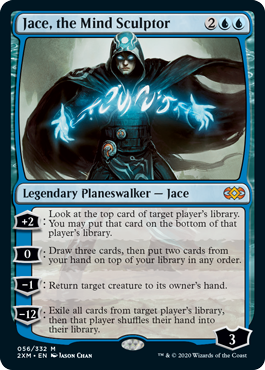
To be ahead in tempo means you are winning in X turns providing nothing else changes in that time which is great but usually not relevant. What is relevant is that it means you can represent some hurdle for a planewalker being deployed against you. The planeswalker will be forced into using it's defensive mode or will only get one activation and die, it might not even have the option on the former really. Jace has done a lot of being a four mana Brainstorm in his time. Sure, he effectively gains some life in the process too but three mana worth of life? Rarely. Planeswalkers uncontested win games quickly, planewalkers contested are often somewhat inefficient on tempo. This is the main reason to be so mindful for having a high tempo lead early. You might not be able to accurately predict the kill clock but you do want to be prepared for any random walker to flop into play and need dealing with. When your walkers are game winning threats that are hard to answer and theirs are sorcery speed versions of cheaper spells you have a big edge. This dynamic combined with much more card advantage and value spells across the colour pie is what has driven the importance of tempo so much. There is also the fact that threats are much much better too which is less important than the other two factors but does mean kill clocks are naturally lower.
So, in conclusion we are aiming to get ahead or keep our opponents level with our pace of tempo. We do this by putting sources of ongoing damage into play and/or removing those of our opponents. On a clear board any dork is relevant but as the game goes on and the board fills up you need to rely on removal, bigger dorks, evasive ones, and other forms of key word abilities on them to fight that tempo war. You need to be lining things up all the time and assessing where the weak spots or points of high risk are for both you and your opponent. Ideally your lines will minimise your risk exposure while keeping suitably ahead. To me knowing a matchup is about knowing the point at which you should expect to have won by or stabilized by, past that point your odds of winning at low. This idea lets you know how much to extend by. How much tempo advantage you need to add or clear from the board to give you the best odds. This applies less in the mirror matches and small edges or specific cards become far more key. Once you have been ahead in tempo for long enough you can start to formulate your exact route to winning the game. Lining things up will still be useful but considering tempo has been supplanted by considerations of life total and damage.
I will try and rewrite this essay in a few years such that I can present it better. I am aware I repeated points rather more than I would have liked and almost certainly ordered points poorly. In an ideal world I would have kept this as a draft and only published the next attempt but in practice I can't be sure I will get round to it and a hard to read version now has more utility than nothing at all or indeed nothing for a period of time! All of which I realise is a long winded way of saying sorry not sorry... I hope this is of some use for now.